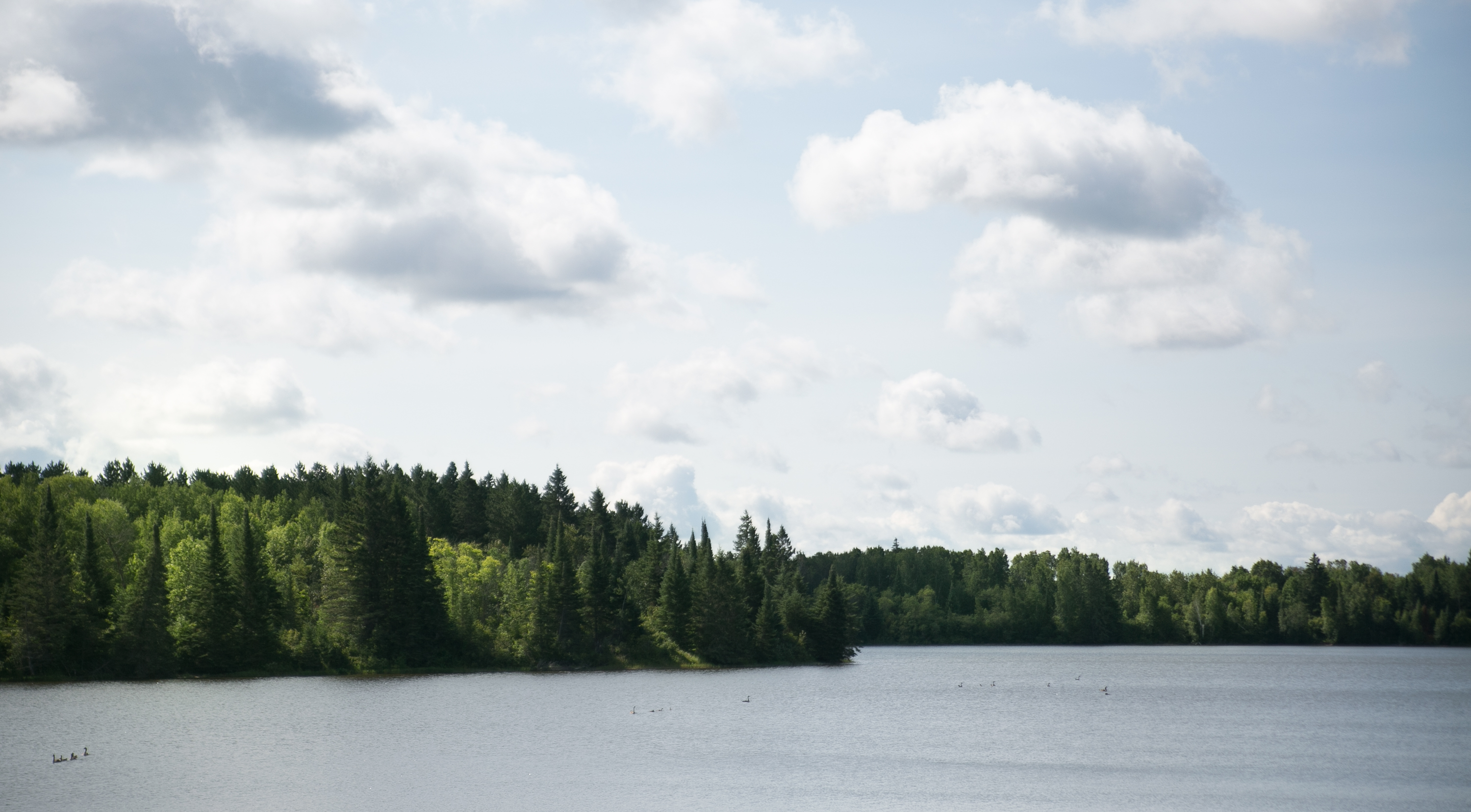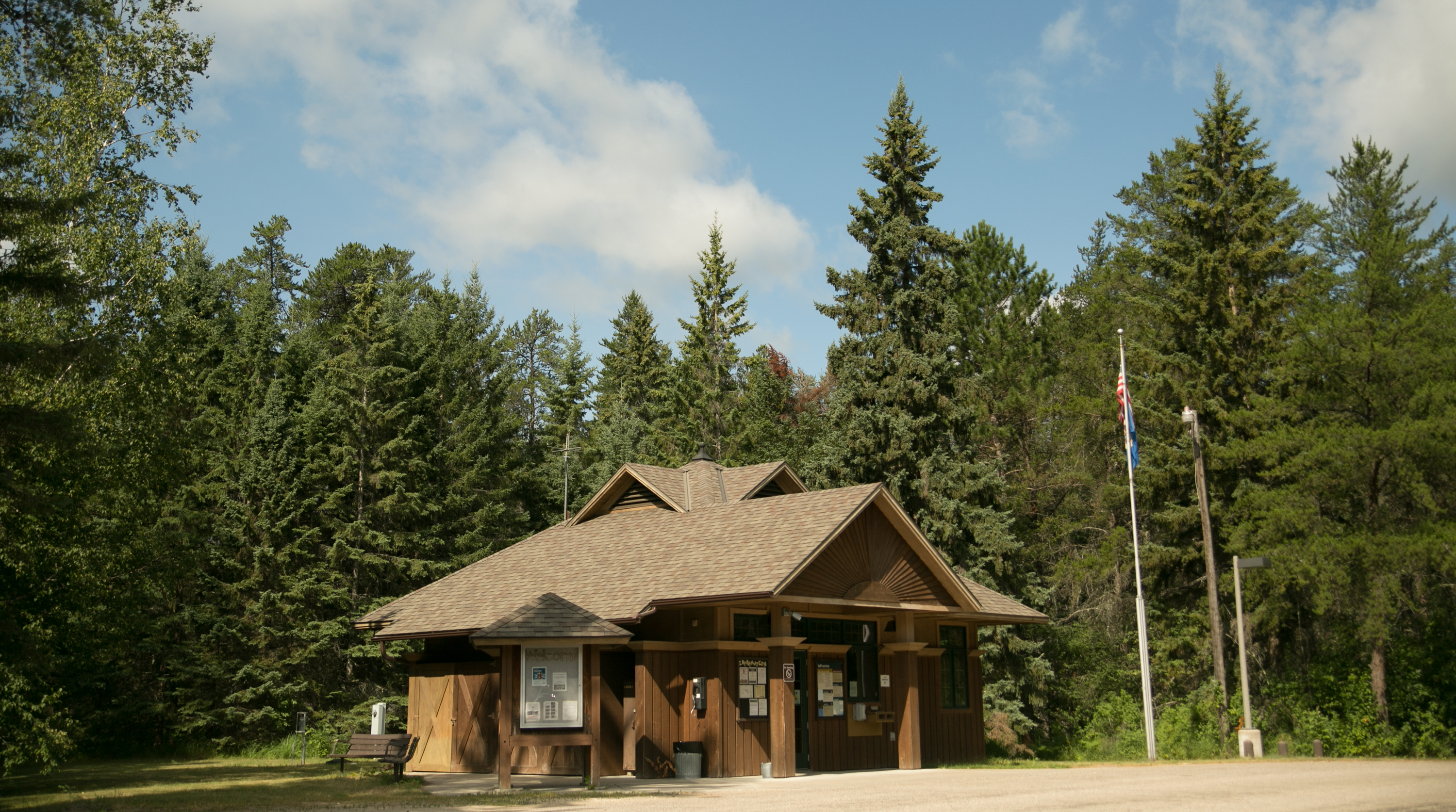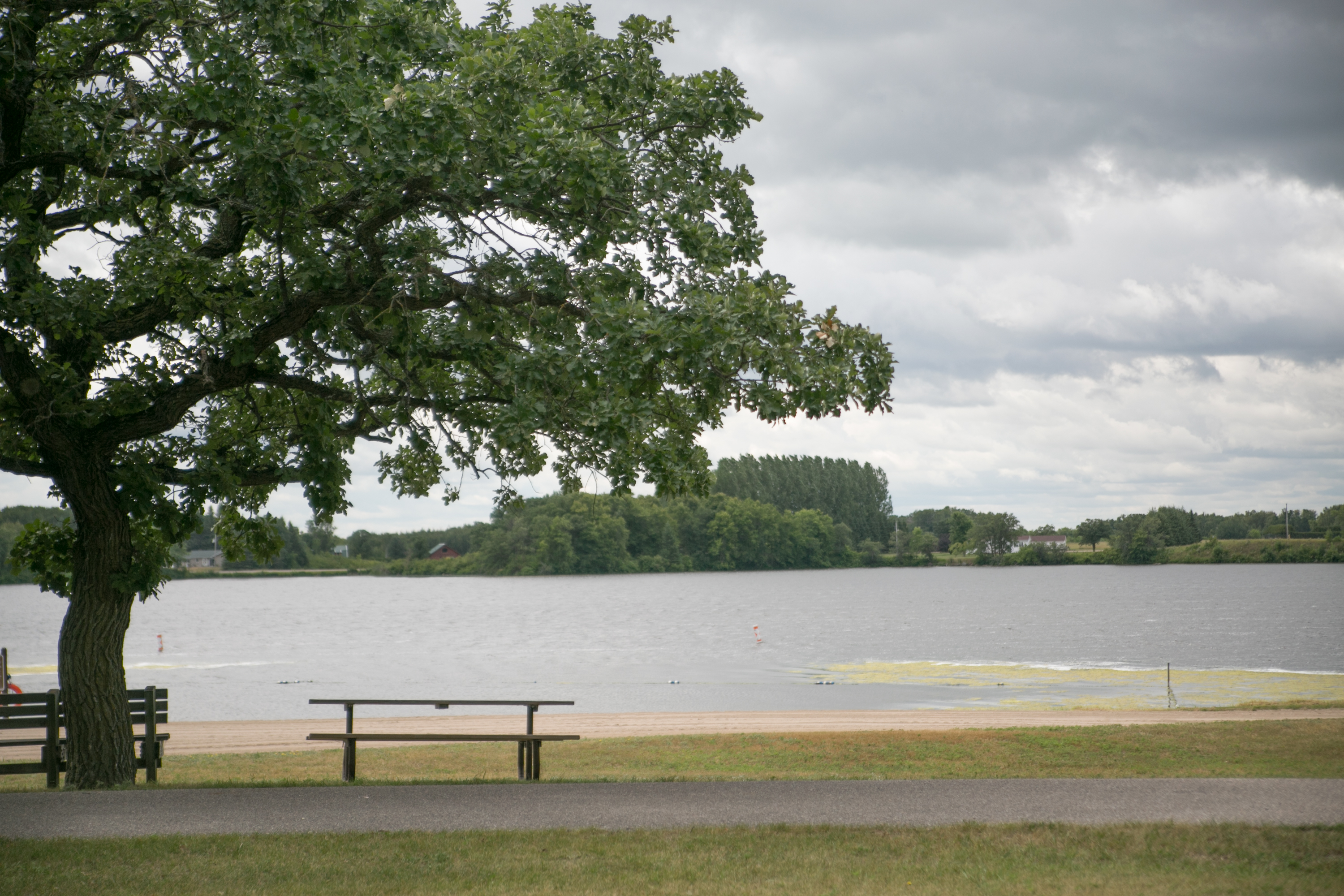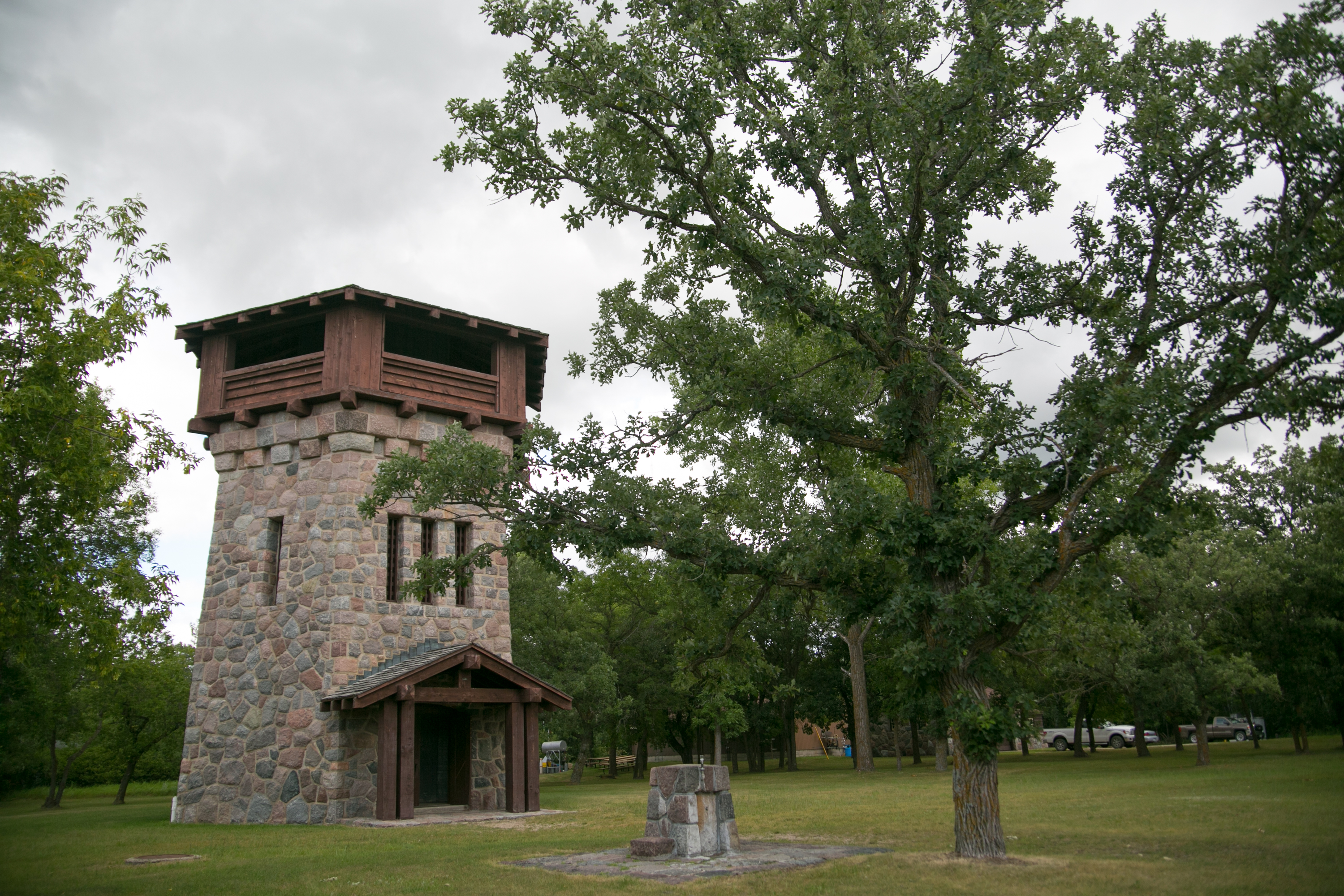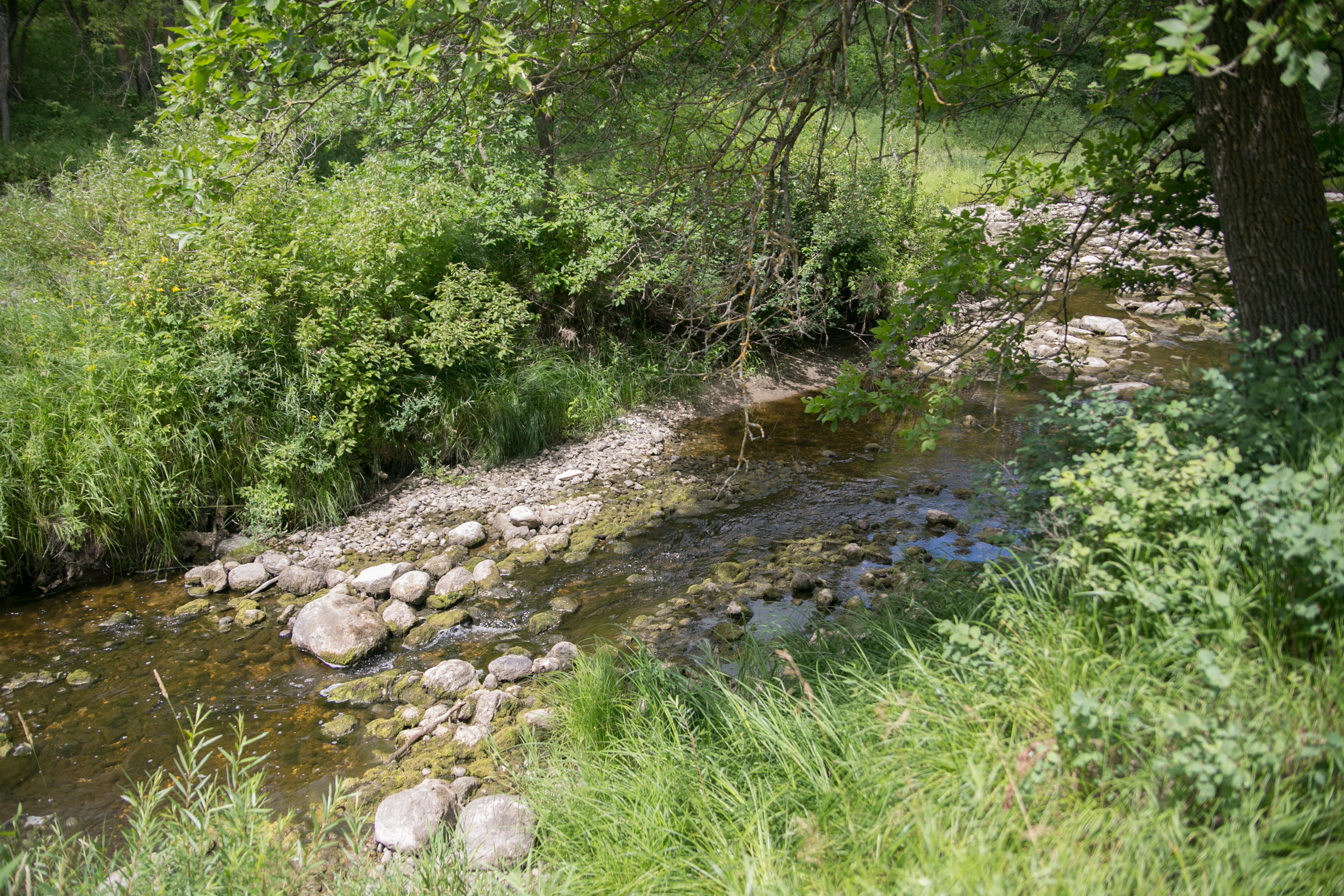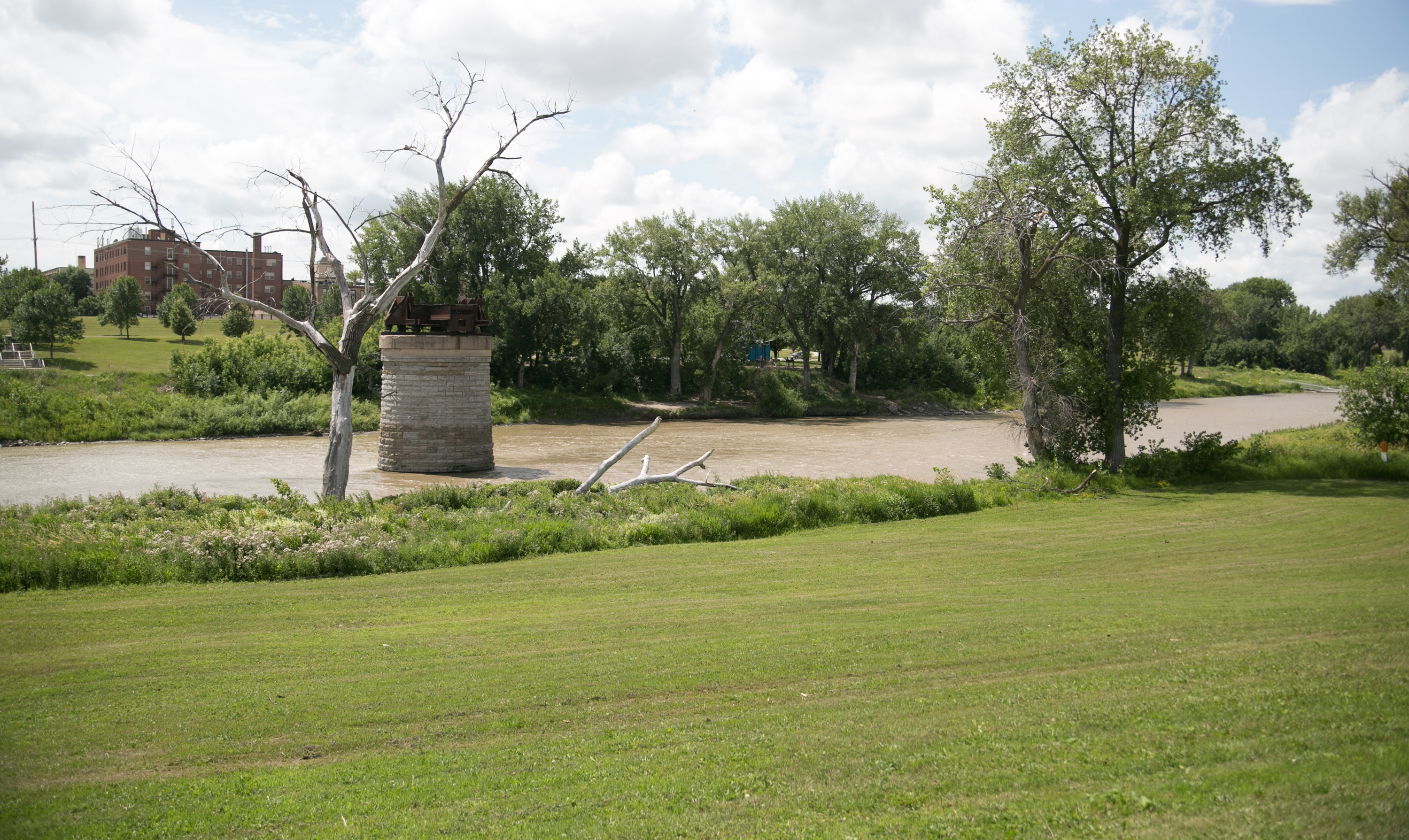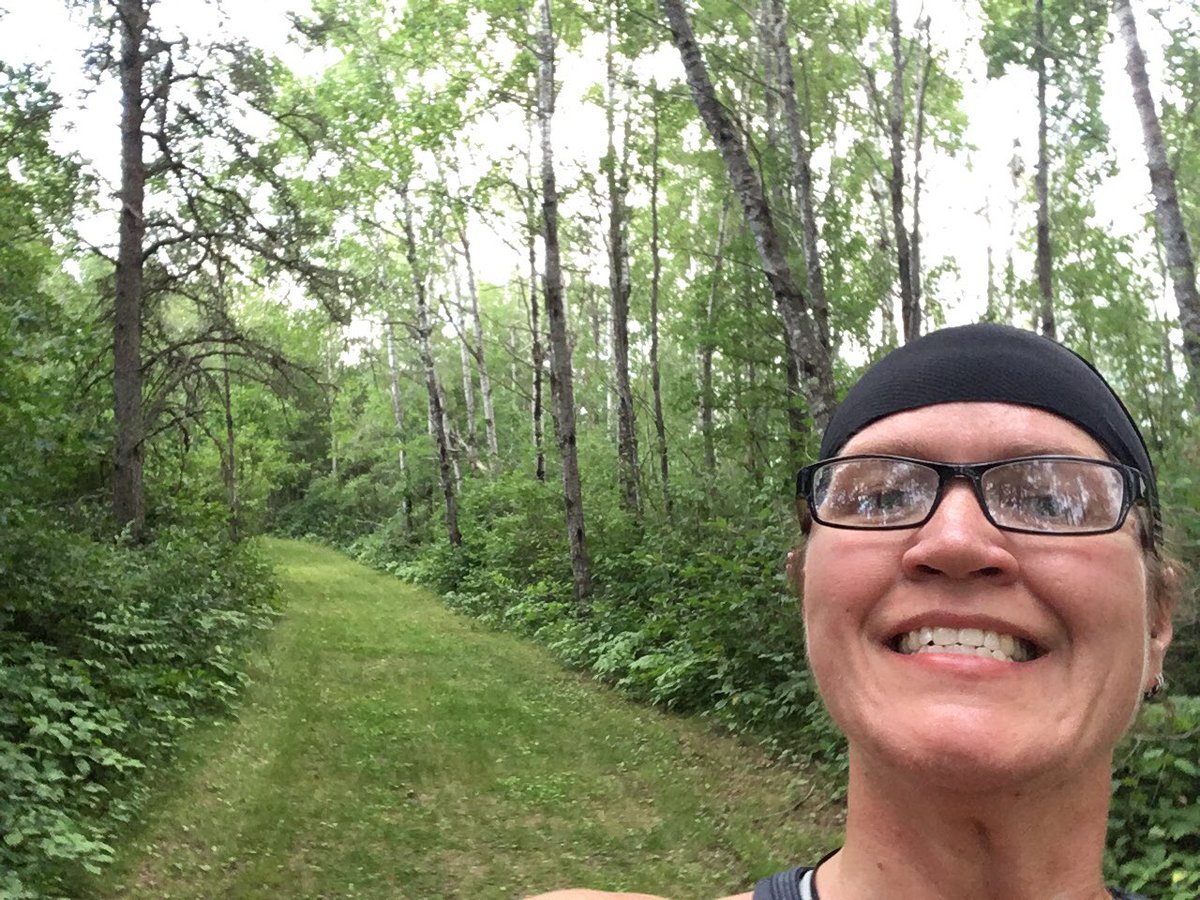mn state parks: north west
after my fantastic night of sleep at zippel bay, i woke up and made some coffee, had breakfast, and then broke camp. it was still eerily quiet, and the sky was dead flat grey. i was the first person out of the campground (drove past the two other patrons), then stopped at the swimming beach to take another look at that wide expanse of water.
If you click on this pic and zoom in, maybe you can see the white line of waves on the water horizon. also, the fisherpeople!
i took off along the north end of our great state and headed west. this day was going to be a long driving day. i stopped in warroad to fill up my gas tank and ended up getting a cup of coffee and a donut; so much for roughing it on the food end. then on my way out of town i drove past the anderson window plant and had the weirdest sense of deja vu from when i was 3 or 4 and at my grandparents’ house in roseau. my aunts rae and meg had taken me to a fair or something, which i would have guessed would have been in roseau (and maybe the polaris plant), but the arrangement of the anderson building and the field next to it sure did suggest it was there.
hayes lake
my first park was hayes lake, just south of roseau. despite being a dammed up river, it is a pleasant little park with tall pines, and the lake the dam created is home to many water fowl (open water is scarce in the northwest).
this is the quintessential “up north” looking lake to me. pines, some birch/aspen, meandering lakeshore.
on my way it out it occurred to me that i never get shots of the park entrances. here’s hayes lake’s! this is a pretty common looking ranger station. it’s also the common theme that there weren’t many people at most of the parks i went to. but for an introverted weirdo traveling during the week, that’s ok.
lake bronson
i took off through the desolate flat land of northwest MN to lake bronson. not only have we entered the lake bottom of lake agassiz, the prairie has swept in and trees are sparse. occasionally i saw a stand of pines lining a field. along the way, i saw many many sunflower fields, heads turning toward the sun. i also saw many fields, not just sunflower fields, with stacks of honeybee hives at the edge of them. that’s something i haven’t seen a lot of in the rest of the state. i’m not sure if this is because there are enough pollinators in the southern part of the state or if the northerners just like their honey.
lake bronson is another dammed up river that was created in the hopes that it would be another itasca state park but in the upper part of the state. there was a great interpretive center (i do love me an interpretive center) and a water tower left from the CCC days. many of our state parks were created as part of the civilian conservation corps, and there are many buildings and constructions that still stand as a result.
lake bronson isn’t the northern most park, nor is it the most western, but it is the most northwestern park. it really lends to the idea that all minnesota citizens have access to a state park nearby.
old mill
old mill state park is in the boonies – not near any discernibly large town (or village even), in the midst of flat farmland and winds whipping across the prairie. it’s an historical site more than anything. the larson mill was the only mill in the area and people would come from all over to get their grains milled. it was like a big family reunion every time they went to the mill.
at first the mill was water run, then steam powered. eventually it went out of business after farmers left their self-sustaining ways behind them and started buying all their goods at a grocery store rather than growing them themselves.
(i seriously don’t know how that mill was water powered. maybe the river was low when i was there.)
you could still see the wagon wheel ruts from the horse-drawn wagons that used to pull up to the mill. kind of like how you can still see oregon trail ruts (but not quite so intense).
red river
red river recreation area in east grand forks is a relatively new park, created after the 1997 flood. it used to be residential area, but since the flood pretty much wiped everything else, they didn’t want to rebuild and decided to make a recreation area instead. after i learned that, i could see how it used to be a neighborhood – the streets are still there and curbs, large trees you’d find in a yard, and instead of houses, people back in their fifth wheelers (that is not camping to me).
one thing i found interesting was a bridge that used to cross the river; they took it out and removed the footings because they were so large they were disrupting the natural flow of water*. they did leave on giant footing, which i thought for sure is more of a disruption than anything else that could be in the river.
i didn’t spend too much time in east grand forks. the last time i was there was for a job interview at UND, which i’m glad i didn’t get so i wouldn’t be living in EGF.
i was able to hop on a major highway, which was a 4-lane, and i booked it across the prairie. i was driving through crookston when OMG CIVILIZATION – i saw a sign for caribou. i actually turned across three lanes of traffic (thankfully traffic-free) and turned in to get my ice crafted press. mmmm deliciousness. (what can i say – i’m a creature of habit).
at this point my phone was useless and i no longer had my printed out google maps, so i was pulling a norm wallace and reading the paper map of the state and had my gazetteer in the seat beside me. which would prove useful in bemidji, which was coming up next.
eventually the flat land got a little more hilly, and by the time i hit fosston, i had moved from one biome to another, then not that far away in bagley, i was headed to the third one. that’s pretty cool that you can cross three biomes in about 20 minutes.
lake bemidji
i was back in pine country. lake bemidji seemed positively urban and southern compared to my previous day’s pursuits.
i ended up getting lost, driving across town, then driving back to the other side of the lake before finding the park. this one was a busy park, and the rangers at the station were ready to help out, with the building open til 9 p.m.! that was insane compared to what i had been experiencing.
i found my campsite and set up camp, then checked out the lake briefly, it was still windy and slightly cloudy, so i didn’t swim or anything.
(i’d camp here again.)
then i checked out my cooler, which wasn’t so cool anymore. sigh. so i went back into bemidji, checked out the now-closed-up downtown, then got a sandwich. and since i’d left my travel soaps at the cabin at leech, i spent an inordinate amount of money at CVC for travel shampoo and soap (seriously, why is CVC so expensive??).
i got back to my site, ate my sandwich, then got ready for my TRAIL RUN. my phone screen was still a mess (well, still is now), but i managed to take a pic.
literally my only selfie of the trip. i didn’t go on a hike with my big camera, so this will have to suffice for a park pic.
the trail was ok – just a little over 2 miles and a lot of it was just grass, but there were some excellent dirt parts that went through some pretty awesome tall pines. the st john’s trails are more technical, but i definitely liked the giant pines.
then i took a shower at the campground and OMG i think i’m still cold. all cold water, so i was in and out of there as quickly as possible. in fact, i didn’t even get under the water; i sort of stood in the corner and threw water at myself.
once clean, i went back to camp, read my book, and enjoyed the sound of the wind in the pines.
*i just ordered john mcphee’s “the control of nature” which i am excited to read. it’s all about how dams and other ways that people try to control nature when we should just let nature take its course. salmon can’t swim upstream anymore; they need to be taken upstream by people. rivers that naturally meander across the landscape aren’t allowed to do that anymore. and while without damming rivers we wouldn’t have parks like hayes lake or split rock creek, time has show that nature really does have the final say.

